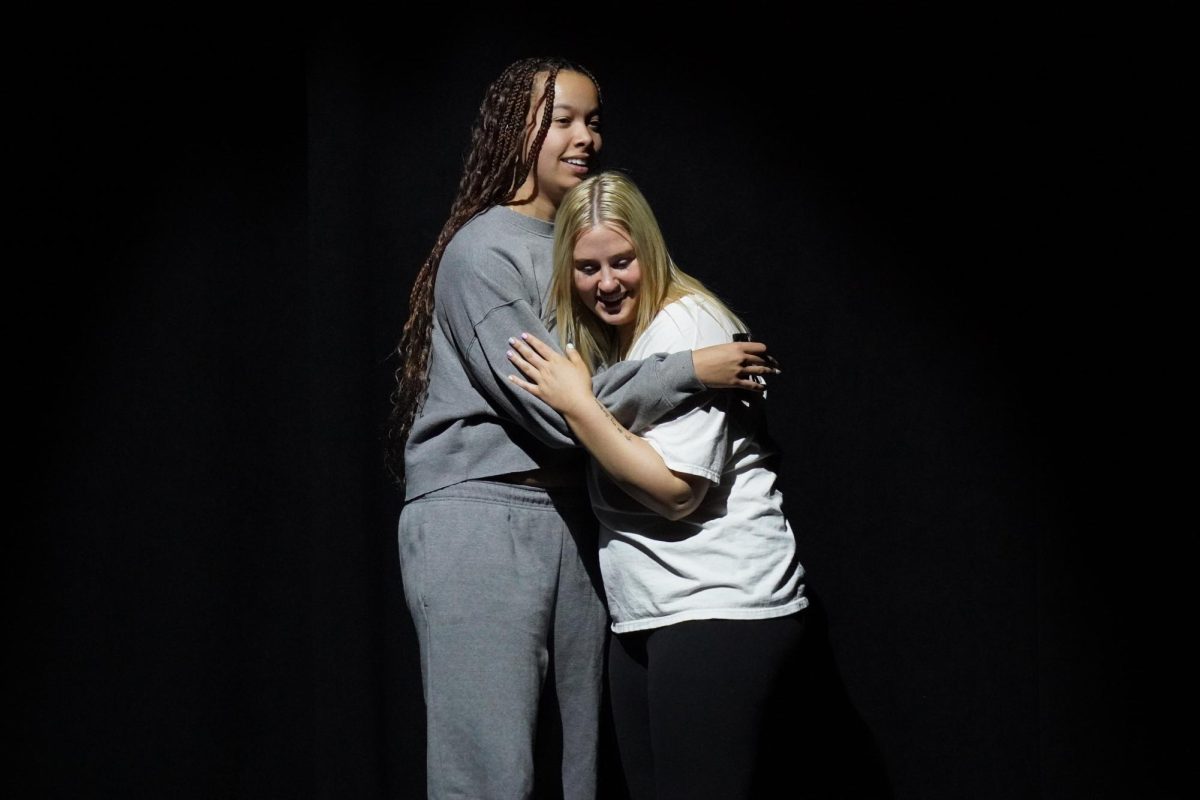Even 400 years later, thine defecation is most amusing. Despite casting issues resulting from a last minute illness and unscripted traipses across the stage, director Dario Tangelson’s production of Shakespeare’s “A Comedy of Errors” was exactly that – full of good-humored confusion and great laughs.
The play, which examines the innumerable confusions and misunderstandings that arise when dealing with two or more indistinguishable people, is one of Shakespeare’s earliest and shortest works. In it, two sets of male twins are tragically separated from each other and their parents/guardians during a tempest at sea, and follows the story of their rather chaotic reunion.
“This play definitely helped me develop as an actor; I had tons of fun being a prostitute, a nun and a man at the same time,” said Noelle Dominique Rodriguez, who played Emilia, the Abbess and the Courtesan, as well as Balthazar.
The play began with the actors emerging one by one, faces painted white like mimes, from closet-like rooms in the back wall of the stage. Funky 80s music played as each actor walked down the center of the stage and struck a humorous pose, eliciting hesitant laughs from the audience.
The two sets of twins, the source of all the trouble within the play, were easily identified by their matching costumes; both Dromio’s were dressed in red jackets with jeans and red snap-backs, and the two Antipholus’s wore matching black blazers with purple detailing and different shaded blue wigs. The other characters’ costumes were also in the modern style, but were fairly non-descript.
Shakespeare, however, is not the most popular type of play to be performed at a college, and as such, it presents unique challenges to the performers. In order to deal with some of these challenges, the cast chose to up-play the physical humor to the extreme by parodying slapstick comedy, and not even making an effort at stunt-violence; instead, characters who were being hit or slapped would stand completely still and clap as their abuser pretended to hit them, and would only begin to be in pain once the slapping had stopped.
“I really liked the physicality of this play – it’s really difficult for audiences to follow along and understand what’s going on, so we used the physical humor to keep them engaged,” said Noelle Dominique Rodriguez, who played Emilia, the Abbess and the Courtesan.
Similarly, because the play was staged in Ives 119, the cast had to get creative with the way they depicted certain scenes, specifically the main character’s (Egeon) retelling of how he lost his family during the storm. In order to effectively stage this scene, the cast used a flashlight and a sheet to create a shadow-theatre reenactment of the merchant’s early life, the birth of the twins, and the storm while Benjamin “Charlie” Baker (Egeon) performed the accompanying soliloquy.
It seemed that the cast achieved their goal; they frequently had the entire audience bursting into fits of laughter, particularly when Phil Ferrero (Dromio of Syracuse) broke the fourth wall, and addressed the audience directly on numerous occasions, telling them if the scene was taking place indoors or out, and declaring a stack of suitcases to be a door. After delivering the lines, he said, “Come on, this stuff was hilarious 400 years ago, and all I get is a chuckle?”
Most amusing of all, however, was easily the director’s impromptu and inspired performance of Antipholus of Syracuse, which was originally supposed to be performed by Vero Gray, who was taken ill before the play. In the middle of lines he would pause, stumble over words, and even tell the audience that he was paraphrasing for their benefit. At one point he even pantomimed an entire soliloquy rather than read the lines from the script. Although it may have been disconcerting for some viewers at the beginning, the audience quickly adapted and rolled with the punches right through the end.
“He’s a director, so he’s a very seasoned actor,” said Rodriguez.
Cassandra Slagle, who played Adrianna, wife to Antipholus of Ephesus, as well as Jailer 1, was an exceptionally notable actress, not only for her outrageous (and enormously entertaining) Jersey Shore accent, but also for her easy and confidant delivery and performance. Even after accidentally walking across stage as the wrong character at the wrong time, she quickly recovered and delivered an exemplary performance throughout the remainder of the play. Her stage presence was undeniable, and the strength of her character as Adrianna provided an excellent focal point, both for the audience and for the rest of the cast.
Ferrero was also notable, primarily for the unending sass with which he delivered both his lines and his asides. His easy improvisation and flexibility when dealing with Tangelson, specifically in the instances where he confidently turned to the script to help him find his lines, alleviated the audience’s tension at seeing an actor struggle, and even made the situation funnier. His counterpart, Max Reiner (Dromio of Ephesus) was equally amusing, as he performed his character with a Shrek-inspired Pinocchio voice that really played up the ‘dumb-and-dumber’ nature of the Dromio twins.
Finally, Kyle Ryan, who played the Duke and Angelo, deserved recognition for his skillful and fluid transition between the two characters mid-scene and even mid-line; he was able to effectively switch between the two personas, and the way in which he did so was amusing rather than unsettling or awkward.
Overall, very few lines were cut (the most being from Adrianna’s biting soliloquys) and even fewer were added – excepting those asides made by Ferrero and Tangelson. All of the actors displayed an obvious mastery of their lines, and their creative and original voices added a distinction to each character that is often lacking in more traditionally staged performances.





![[Both photos courtesy of sonoma.edu]
Ming-Ting Mike Lee stepped in as the new SSU president following Sakakis resignation in July 2022](https://sonomastatestar.com/wp-content/uploads/2024/04/CC4520AB-22A7-41B2-9F6F-2A2D5F76A28C-1200x1200.jpeg)

























